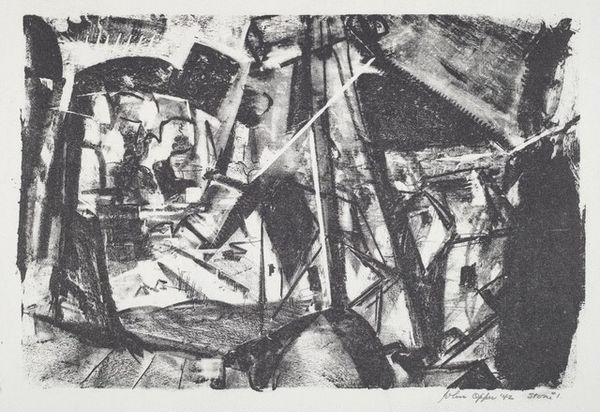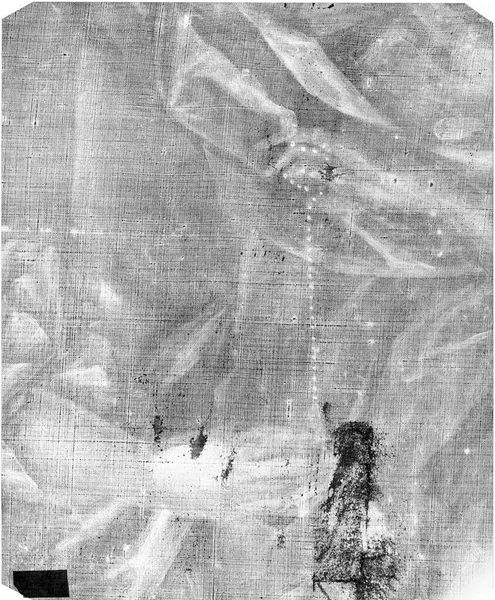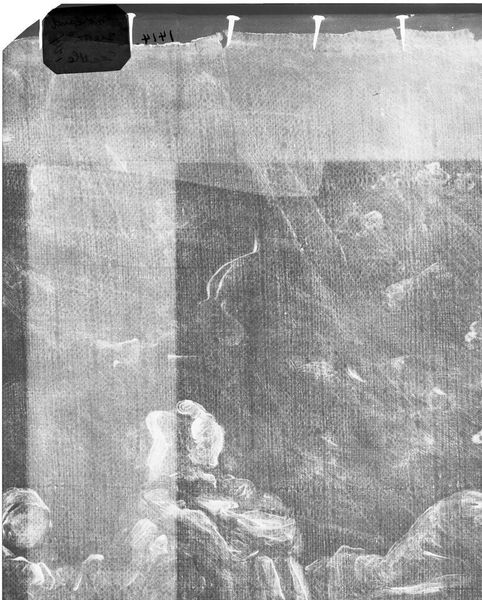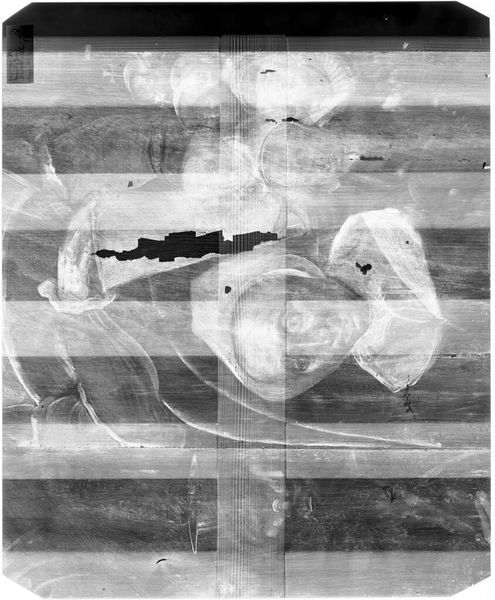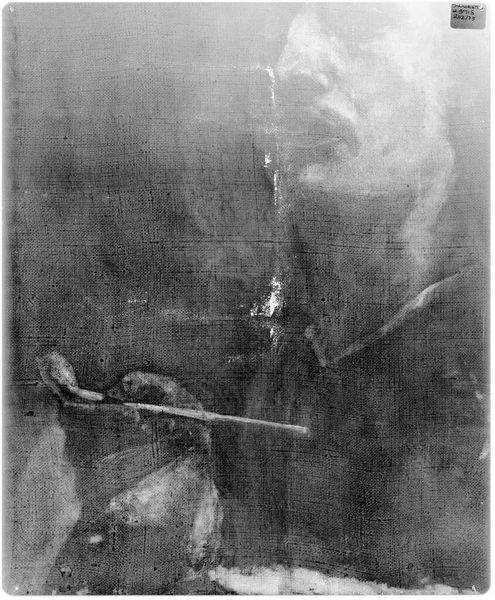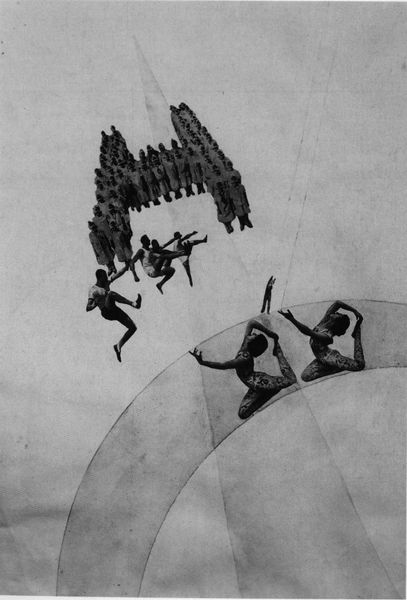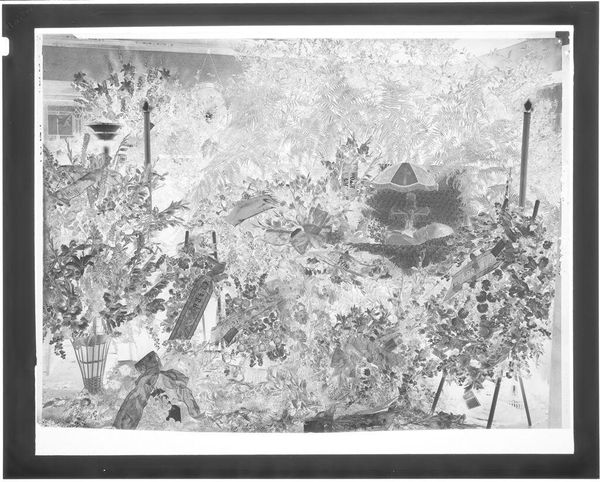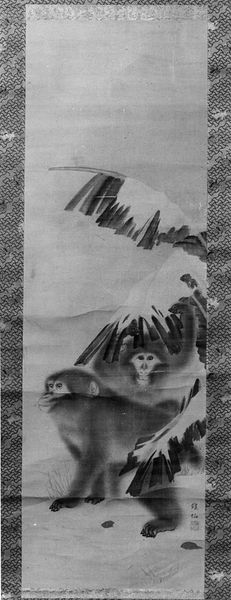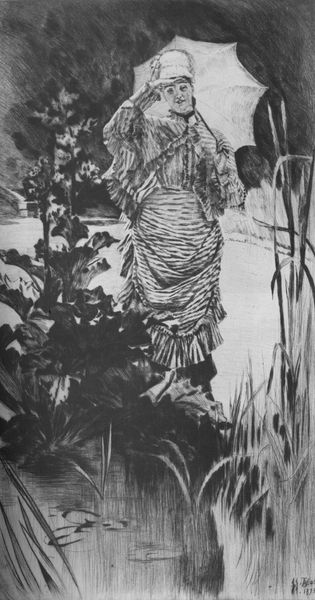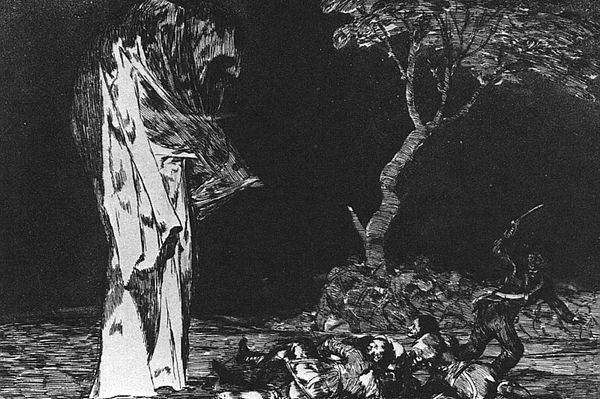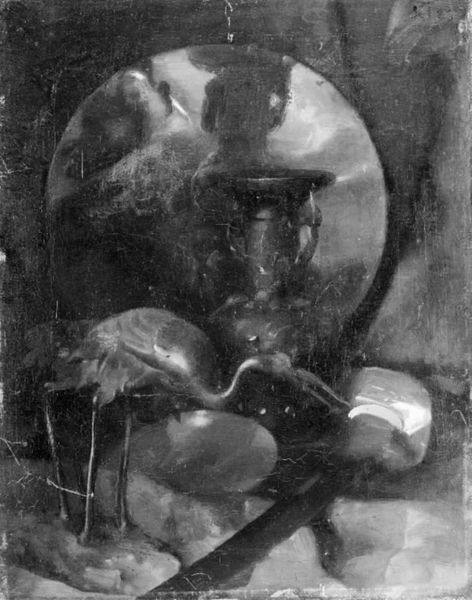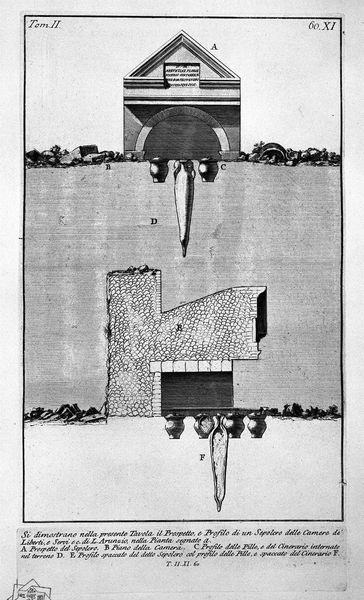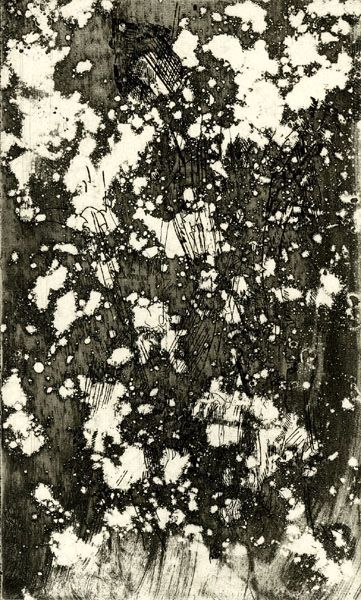
Copyright: M.C. Escher,Fair Use
Curator: Oh, my goodness, that’s… unsettling. Is that what it feels like to be stuck in a nightmare? Editor: It’s definitely striking! What we’re looking at is M.C. Escher’s "Hell, copy after Hieronymus Bosch," made in 1935. It’s an ink drawing on paper. A really fascinating homage and interpretation. Curator: Homage is an interesting word for it! The detail is incredible. I am thinking about all the repetitive, precise work with the ink required to bring such madness into being. Editor: Absolutely. It mimics, perhaps satirizes, Bosch’s "Garden of Earthly Delights." Look at those bulbous forms, those figures crammed into impossible spaces. It’s like a grotesque playground manufactured for pain. Curator: Right? And those architectural oddities are incredibly disturbing. But it really reminds me about social constructions – what structures perpetuate such disturbing and mad worlds? Escher highlights labor in a dark way. Editor: In that regard, the piece prompts us to consider what aspects of humanity have remained unchanged across time periods. Those tortures look incredibly crafted... almost manufactured, as you said, suggesting it is not a spontaneous occurrence but produced labor. Curator: There is something perversely funny about this image, too. I can almost hear the anguished yells amidst a sense of bizarre festivity. It is grotesque, yet comical. A dark party, with sharp humor as the host. Editor: That mix of horror and dark humour, isn’t it? And, looking closely, you see more details – each with their own peculiar torment. I like the guy climbing the ladder; like Sisyphus, doomed to forever going up, and for what? It’s thought provoking how Escher uses the line work to lead our eye and tell stories in each nook and cranny. Curator: What Escher does well here, with such meticulous craft, is open a portal to a pre-existing madness. So many interpretations; maybe the torture lies in endless interpretation. It definitely sits uncomfortably in my soul. Editor: I find it captivating and repulsive all at once. Escher manages to bring us face-to-face with some difficult truths. In that sense, for me, the piece feels more than simply historical; it speaks volumes about labor, social fabric, and about our very humanity. Curator: I will likely see it when I close my eyes tonight! Thank you, Escher, for this descent.
Comments
No comments
Be the first to comment and join the conversation on the ultimate creative platform.
